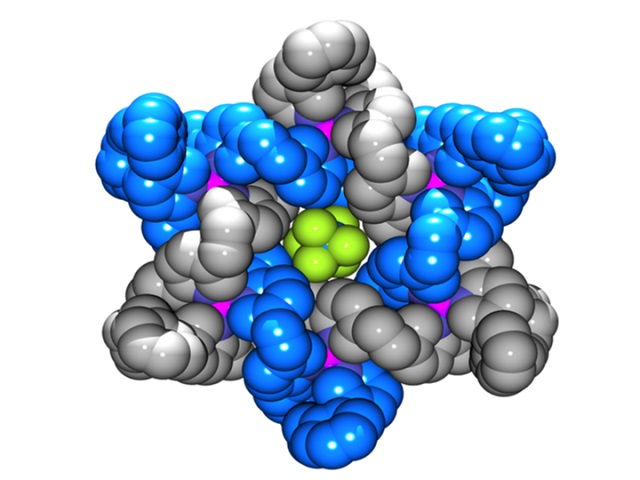 Atoms in the Star of David molecule. Image credit: University of Manchester
Atoms in the Star of David molecule. Image credit: University of Manchester
The molecule is made up of interlocking rings with two molecular triangles intertwined around each other thrice in order to form a hexagram. The interlocked molecules of the structure are very small and the length of each triangle around its perimeter is just 14 atoms long.
Alex Stephens, a PhD student at The University of Manchester created the ‘Star of David’ molecule, after scientists have been trying to produce this molecule for over a quarter of a century. David Leigh, a professor at the School of Chemistry at The University of Manchester, stated that the discovery of this molecule marked a very special day in the field of biological sciences.
Star Of David flyaround
Molecular chainmail is used in nature to create the tough shells of specific viruses and now it is possible to imitate its amazing properties. This research is a key step towards creating man-made molecular chainmail, which could develop flexible, tough and light materials using nanotechnology.
The research team now plans to advance their research by creating more complicated interlocked structures which are larger in size. The study titled 'A Star of David catenane' has been published in the Nature Chemistry journal.